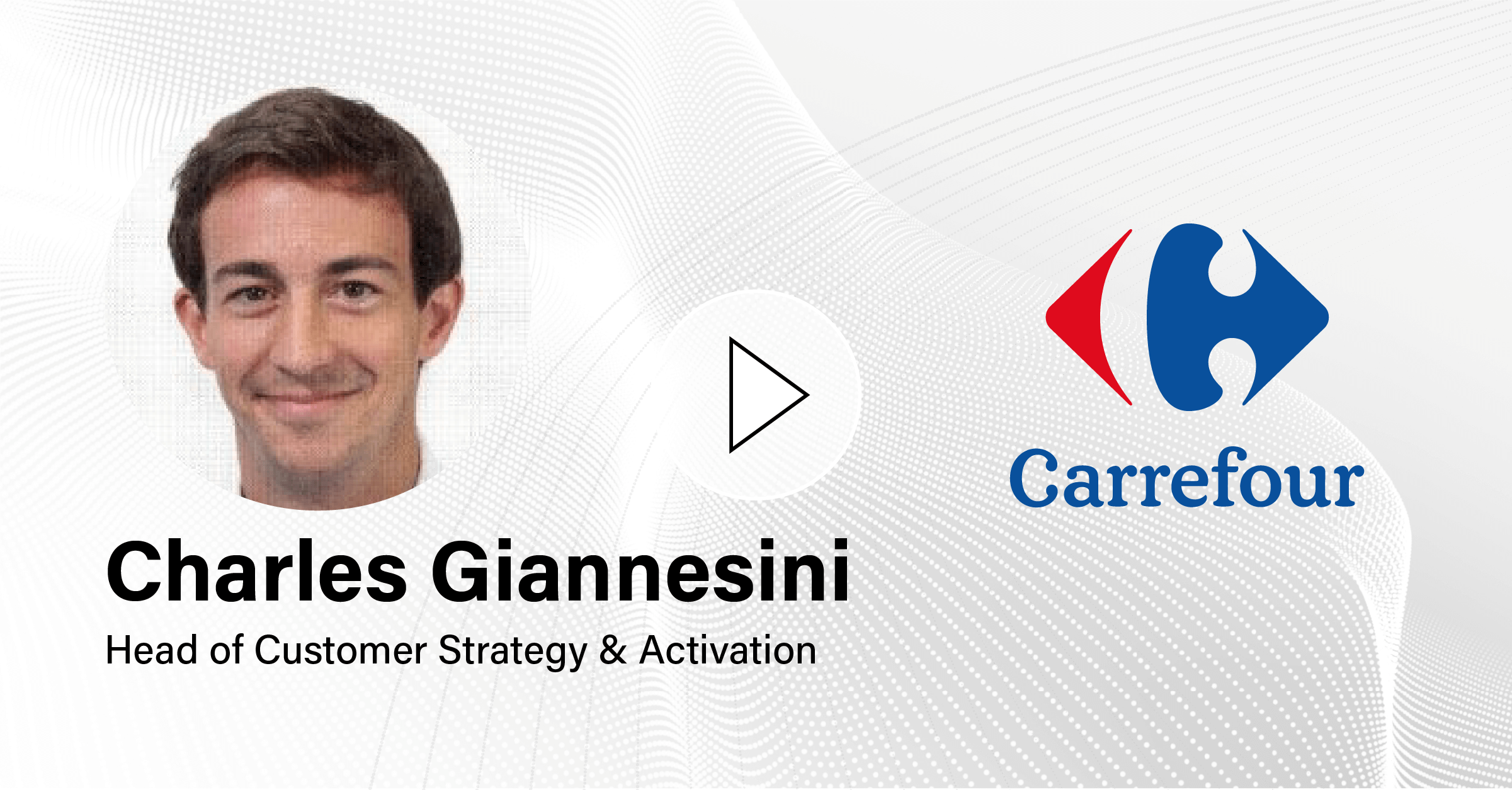March 26, 2020
A Framework For the Communications Journey Ahead

Five guiding principles and a framework to help companies thoughtfully navigate from crisis communications to the new normal.
“We’re here for you.”
Of course, this is a critical message that by now most brands have communicated to their communities and one that we know to be effective and engaging based on running millions of language experiments over the past 8 years.
Unfortunately, as helpful and effective as it is in normal times, it’s not enough now — and it won’t be enough to get us through the long road ahead on the way to a new normal.
The journey ahead of us requires a framework to navigate from where we are today, which is effectively in crisis communications mode, to the new normal, business-as-usual, whenever that may be and whatever that might look like.
Companies need to figure out what this new business-as-usual means, which will look different today, three weeks from now, three months from now, and beyond. It is critically important to have a planning framework that will help you make better and faster decisions during this unique time. It’s a sensitive time to communicate with customers, but it’s more important than ever to get it right.
We’ve developed five guiding principles and a communications framework to help companies thoughtfully plan a strategic approach to navigating the journey ahead.
Guiding Principles to Communicating With Customers in Today’s Environment
Step 1: Embody your organizational values – everywhere
The COVID-19 pandemic represents a world-wide crisis that impacts all of humanity. During this time of crisis, where confusion and anxiety are heightened, it’s time to not just dust-off and remember your core values and brand purpose but to embody and manifest them, everywhere you do business.
How Charles Schwab communicated their values
Charles Schwab CEO Walt Bettinger noted in his communication to clients that “we have a deep and abiding belief in seeing the world ‘through clients’ eyes.’ That simple, and powerful idea helps us stay focused on what’s most important: living up to the trust you place in us every day.” That type of core value, communicated everywhere, is an invaluable True North in this storm.
Reinforce and clarify your organization’s values, first internally and then externally, and align your messages, communications and language with those values to connect and engage customers.
More importantly, of course, is to manifest your values through your actions and not just your communications!
Step 2: Engage stakeholders where they are
With values guiding your specific organizational approach to the crisis, your organization will need to understand what your specific stakeholders are looking for. Understand what it is that they are seeking from you and what you can uniquely provide. During a time of crisis, stakeholders need three themes of communication to emerge:
Assurance
Now is the time to leverage, and communicate, your enterprise’s unique expertise to provide guidance to your consumers. Communicate a plan for your enterprise and suggest your considered guidance for consumers.
Preparedness
Describe what you are doing within your enterprise to deal with the acute phases of the crisis and what you are doing for the long term. Despite the consistent drumbeat of changes and unknowns, your firm can lead by example through frequent communication as you anticipate future phases of the crisis and the steps you are taking to be prepared now. What this looks like will evolve as we progress through several stages of the crisis and eventual recovery. “We’re here for you” was a good start. “What we’re doing to adjust and how that helps you” is a good next step.
Accommodation
Consumers are under duress and being forced to change their lifestyles in dramatic ways. Enterprises will need to rapidly evolve and accommodate to the new normal as well. For some this may be as extreme as reinventing digital-first business models in rapid time. Every company will need to, at a minimum, communicate new service and support capabilities that work for consumers under constraints. Read more: 3 principles to guide initial customer communications during COVID-19
Today that means operating around limited mobility in a “shelter in place” or “essential-only” environment, with travel and other restrictions on day-to-day life. Migration of large customer segments online, business model adaptations (eg: new assortments, new pricing, curbside pick-up or delivery), financial support (eg: flexible payments terms), and new products and services will all be part of the solution to meet customer needs. The language used to communicate this new engagement model and value proposition for consumers must strike a balance between sensitivity and performance. We call this Mindful Marketing.
Step 3: Anticipate the path to a new normal
Depending on your sector and vantage point, it may seem like you spend everyday on your heels reacting to the next piece of disruptive information. However, it is possible to shift onto your toes and start to respond thoughtfully and strategically. Take a page from design thinking – once you understand how your customers’ needs are evolving, you can prepare to evolve your messaging to match these need states. We have developed a simple framework to help navigate the likely journey from crisis communications through the new normal business as usual (BAU):
Phase 1: Crisis Communications
This stage is categorized by a significant initial shock, macro economic stress and uncertainty, and a risk of alienating customers if communications are not aligned to the current reality and expected tone of messaging. In this stage it’s important to protect customer equity, trust and goodwill and adjust effectively to the new consumer operating environment and fast-changing expectations.
Phase 2: Constrained Communications
Once the initial shock has begun to subside, a new phase will emerge marked by increased stress on spending and household budgets culminating in reduced financial resilience. This stage is marked by reduced consumer ability to make payments, reduced spending, and increased reliance on credit. It will be important to anchor communications around reducing churn, continuing to optimize conversions, continue to deliver value across the customer experience, and stimulate loyalty.
Phase 3: Targeted Expanded Communications
Once recovery starts to take hold, segments of customers will begin to adjust or recover based on financial security and confidence in the trajectory of macro-economic recovery. At this point it will be important to start to understand new customer segmentation and fuel new growth from key segments with targeted offers.
Phase 4: New Normal BAU
Eventually a critical mass of consumers will feel a path to normalcy as employment comes back to pre-crisis levels and we all begin to accept and become accustomed to improving conditions. As this occurs it will be critical to have a pulse on consumer insights, develop new segmentation, and fortify a new baseline of acquisition and retention at-scale. The time living under the constraints of the crisis will change consumer behavior, expectations, and responsiveness to specific messaging and emotions for the long term. Those who understand these nuances in the years to come will have a significant advantage over those who do not.
Step 4: Identify how the customer journey may change
Businesses will move through the different communications phases as the crisis slowly evolves into a new business-as-usual, and the customer journeys need to be revisited at each phase to ensure that the business will meet consumer needs, pain points, and expectations. To make this actionable and practical — at each intersection of the customer journey stage and communications phase — there exists a set of specific problems to be solved, desired outcomes, and key use cases (eg.: Customer Acquisition stage within the Crisis Communication Phase). Take the time to clearly articulate what this looks like for your business.
Of course, this will look very different by industry. Persado has developed the frameworks for several industries including banking, retail, telco, health insurance, and P&C insurance.
As an example, for a bank this may mean delivering on the servicing needs of customers who are new to digital banking during an extended period of personal financial uncertainty, triaging overloaded call centers, managing the demand for new credit applications, and the potential risk of default or churn, and then determining the types of messaging that helps capture the acceptable demand in the market. For a property and casualty insurer it would include implications on payment patterns and driving engagement that predictively reduces collections, as well as messaging that creates further reassurance and digital usage during the claims process.
For retailers, large customer segments will need to be migrated to digital channels, product assortment and pricing will evolve, and fulfillment will need to scale overnight. The level of sensitivity and how wide you re-open the targeting and offer engine depends on where your customers are on the journey to recovery. The new business-as-usual will be defined by customers’ acceptance of and confidence in the new normal — and this will indeed be a journey and not a destination.
Step 5: Commit to market and consumer insights
You don’t yet know how much of your old “playbook” can still be used to engage customers to grow your business today. Keep your ear to the ground on your industry and invest the time and effort to develop valuable consumer insights from observed behavior. Again, every industry will have to tackle different challenges and opportunities. Some retailers for example will have a product assortment with limited relevancy during the crisis, or limited awareness within product categories, and most will need to dramatically accelerate the adoption of digital by a largely offline customer base, and learn about new customer segments in a matter of days or weeks not months or years.
Retailers are being forced to reinvent themselves as digital-first businesses overnight, and move up the digital maturity curve in a matter of days, not months or years.
For example, in the case of a health insurer (payer), commercial growth may dry up due to rapid rises in unemployment. As payroll numbers drop, commercial membership will likely fall off. Participation in individual or individual group and state exchanges may be an alternative source for growth. Narrow network products may be the most attractive based on cost and margin. These products will need to be promoted using direct-to-consumer techniques unlike employer-centric products.
Doing our part: Governing communications in the weeks and months to come
An AI-Based Communications Safety Net
Persado has developed new language architecture and new governance within our platform to provide an AI-powered communications safety net, so to speak, to help companies adapt messaging and language during this time. There are three immediate steps we are standing up as a way to support clients at this stage of the crisis:
- Scan customer touchpoints for messaging inconsistencies with the crisis stage and any special communications needed to ensure language is adapted and in-tune with the tone of the time.
- Zero-in on the positive emotions that drive engagement without being insensitive or tone-deaf.
- Proactively elevate messaging using ready-to-go predictive content that appropriately leverages insights from aggregate data while still being contextually-sensitive.
So what does “We’re here for you” look like now?
As we progress from the early days of the Crisis Communication phase where every brand has already voiced this basic sentiment, it’s time to quickly move to the next step and communicate (and demonstrate) just how you are there for your customers in clear detail that adds value, with language that effectively engages customers. Make it visible and easily accessible such as a notification banner on the top of the brand home page to communicate “We’re taking immediate steps to help customers impacted by COVID-19. Read about them here.
”The framework laid out here will hopefully act as a navigational guide to help you make strategic decisions about how you can and should engage and communicate with customers along the journey to new BAU. Creating a compelling value exchange with customers and putting the customer at the center of the experience has always been important, and difficult. It’s even more important and challenging now, but with a structured approach and engaging language the blind spots can start to come into focus.

